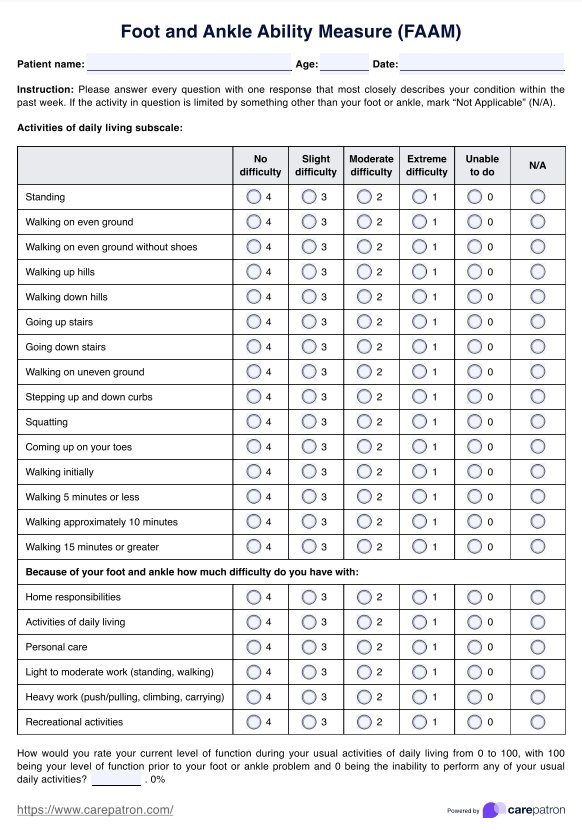Foot and ankle problems can be caused by injuries (such as sprains and fractures), overuse, arthritis, and chronic conditions like plantar fasciitis and Achilles tendinitis.

Foot and Ankle Ability Measure
Assess foot and ankle function efficiently with our FAAM template. Learn about its benefits, scoring, and how it helps in clinical practice. Download now!
Use Template
Foot and Ankle Ability Measure Template
Commonly asked questions
The FAAM can be administered at regular intervals, such as during initial assessment and follow-up visits, to monitor changes in a patient’s functional abilities and adjust treatment plans accordingly.
Yes, the FAAM is designed to be versatile and can be used for a wide range of ankle and foot disorders and ankle problems, including those resulting from injuries, surgeries, and chronic conditions.
EHR and practice management software
Get started for free
*No credit card required
Free
$0/usd
Unlimited clients
Telehealth
1GB of storage
Client portal text
Automated billing and online payments











